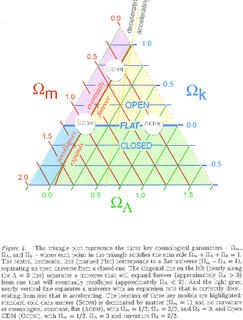Dirac's Hidden Geometries
When one is doing mathematical work, there are essentially two different ways of thinking about the subject: the algebraic way, and the geometric way. With the algebraic way, one is all the time writing down equations and following rules of deduction, and interpreting these equations to get more equations. With the geometric way, one is thinking in terms of pictures; pictures which one imagines in space in some way, and one just tries to get a feeling for the relationships between the quantities occurring in those pictures. Now, a good mathematician has to be a master of both ways of those ways of thinking, but even so, he will have a preference for one or the other; I don't think he can avoid it. In my own case, my own preference is especially for the geometrical way.
For me the maths are not easy yet following experimental processes help me to direct my thinking. If we enage in philsophical talk then th eessence of this talk had to have a logic basis to it that is currently being expressed as far as I understood it. BUt even this logic take on new methods to expand and make room for the proceses for which we are engaging in talking about.
It is indeed a tuff struggle to remain current in thinking and stil embue our lives with the philosophies we hold in front of us?
The whole point is a comparison was made and reduced to philosophical idealizations, and was diverted from the math? There were consisent methods established that leads us to todays information. Is your philsophy based on what we now know?
Purity of thought around these issues, would have helped me to recognize that reducing these things to "philsophical debate" had to follow experimental processes, and that what I was trying to show, points towards the current work in scattering amplitudes(new models used?) to push perception.
How would our thinking change in how we percieve according to the new models we used for moving perception beyond what it currently houses?
Test of the Quantenteleportation over long distances in the duct system of Vienna Working group Quantity of experiment and the Foundations OF Physics Professor Anton Zeilinger
Quantum physics questions the classical physical conception of the world and also the everyday life understanding, which is based on our experiences, in principle. In addition, the experimental results lead to new future technologies, which a revolutionizing of communication and computer technologies, how we know them, promise.
In order to exhaust this technical innovation potential, the project "Quantenteleportation was brought over long distances" in a co-operation between WKA and the working group by Professor Anton Zeilinger into being. In this experiment photons in the duct system "are teleportiert" of Vienna, i.e. transferred, the characteristics of a photon to another, removed far. First results are to be expected in the late summer 2002.
Further research of Anton Zeilinger:Scientific Publications Prof. Anton Zeilinger
Quantum teleportation, step by step. Although the details of their experiments differ, both the NIST and Innsbruck teams have achieved deterministic teleportation of a quantum state between trapped ions:(image and text credit: H J Kimble and S J van Enk Nature)
First, an entangled state of ions A and B is generated, then the state to be teleported -- a coherent superposition of internal states -- is created in a third ion, P.
The third step is a joint measurement of P and A, with the result sent to the location of ion B, where it is used to transform the state of ion B (step 4).
The state created for P has then been teleported to B
By taking advantage of quantum phenomena such as entanglement, teleportation and superposition, a quantum computer could, in principle, outperform a classical computer in certain computational tasks. Entanglement allows particles to have a much closer relationship than is possible in classical physics. For example, two photons can be entangled such that if one is horizontally polarized, the other is always vertically polarized, and vice versa, no matter how far apart they are. In quantum teleportation, complete information about the quantum state of a particle is instantaneously transferred by the sender, who is usually called Alice, to a receiver called Bob. Quantum superposition, meanwhile, allows a particle to be in two or more quantum states at the same time
The history contained in this post should direct any further perceptions I have, but you know, I still believe we will judge ourselves as to the constitutions with which we had choosen to exemplify in our continuing evolution of soul.

